
Welcome to my guide on Pothos plant care! If you’re a beginner looking to add some greenery to your indoor space, Pothos plants are the perfect choice. These beautiful houseplants, also known as Epipremnum aureum, are known for their lush foliage and easy care requirements.
In this article, I will provide you with essential tips to ensure your Pothos plants thrive and grow healthy.
Key Takeaways:
- Provide bright, indirect light to your Pothos plants
- Water them regularly, allowing the soil to slightly dry out between waterings
- Maintain moderate humidity levels for optimal growth
- Keep temperatures between 65°F-85°F (18°C-30°C)
- Propagation is easy through stem cuttings or division
Introduction to Pothos Plant Care
When it comes to houseplants, Pothos plants are a popular choice for beginners due to their easy care and beautiful foliage. Also known as Devil’s Ivy, these climbing plants are native to tropical regions of Southeast Asia, where they can grow up to 60 feet in length.
With their heart-shaped leaves and various varieties like Golden Pothos, Marble Queen Pothos, and Neon Pothos, Pothos plants can add a touch of beauty to any indoor space.
One of the reasons why Pothos plants are so beloved is their ability to thrive in different lighting conditions. While they prefer bright, indirect light, they can also tolerate lower light levels. However, it’s important to avoid exposing them to direct sunlight for extended periods as it can cause leaf burn.
In terms of watering, Pothos plants like to be kept moist but not overly saturated. Allowing the soil to dry out slightly between waterings is essential to prevent overwatering and root rot. Additionally, maintaining a moderate level of humidity and providing temperatures between 65°F-85°F will promote healthy growth for these resilient plants.
Understanding the Basics of Pothos Plant Care
When it comes to caring for your Pothos plant, understanding the basics is essential. These easy houseplants require minimal maintenance, making them perfect for beginners. Here are some key tips to help you care for your Pothos and ensure its healthy growth:
Lighting:
Pothos plants thrive in bright, indirect light. While they can tolerate lower light conditions, placing them in a well-lit area will promote optimal growth. Avoid direct sunlight, as it can cause their leaves to burn.
Watering:
Proper watering is crucial. Allow the soil to dry out slightly between waterings, as overwatering can lead to root rot. Check the moisture level by inserting your finger into the soil. If it feels dry about an inch below the surface, it’s time to water.
Humidity and Temperature:
Pothos plants prefer moderate humidity levels but can tolerate normal or dry air conditions. Increase humidity by using a humidifier or placing a tray of water near the plant. Keep the temperature between 60-80 degrees Fahrenheit (15-26 degrees Celsius) for optimal growth.
| Lighting | Watering | Humidity | Temperature |
|---|---|---|---|
| Bright, indirect light | Allow soil to dry slightly between waterings | Moderate humidity levels | 60-80°F (15-26°C) |
| Can tolerate lower light conditions | Avoid overwatering to prevent root rot | Use a humidifier or tray of water to increase humidity | Keep away from drafts and extreme temperature fluctuations |
By following these basic care tips, you can ensure your Pothos plant thrives and adds a touch of greenery to your home or office.
Remember, Pothos plants are resilient and forgiving, so don’t stress too much about getting everything perfect. With a little love and attention, your Pothos will reward you with beautiful, trailing foliage.
Essential Pothos Varieties for Beginners
When it comes to choosing the right Pothos variety for beginners, there are a few options that stand out for their easy care and stunning aesthetics. These varieties not only require minimal maintenance but also add a touch of beauty to any indoor space. Let’s take a closer look at some essential Pothos varieties:
Golden Pothos
The Golden Pothos is a classic choice for beginners. Its heart-shaped green leaves with yellow variegation create a vibrant and eye-catching display. This variety is known for its resilience and ability to adapt to different lighting conditions, making it an excellent choice for those new to houseplant care.
Marble Queen Pothos
The Marble Queen Pothos features green and white variegation, creating a marbled effect on its leaves. This variety adds an elegant and sophisticated touch to any room. With its easy-going nature, the Marble Queen Pothos is an ideal choice for beginners looking to add a touch of beauty to their indoor space.
Neon Pothos
The Neon Pothos is a vibrant variety with eye-catching lime-green leaves. Its vibrant color adds a pop of brightness and liveliness to any room. This variety is known for its hardiness and ability to thrive in various lighting conditions, making it a perfect choice for beginners looking for a low-maintenance and visually striking houseplant.
| Variety | Description |
|---|---|
| Golden Pothos | Heart-shaped green leaves with yellow variegation |
| Marble Queen Pothos | Green and white marbled leaves |
| Neon Pothos | Lime-green leaves |
Ideal Light Conditions for Thriving Pothos
Pothos plants are versatile when it comes to light conditions, but providing them with the ideal lighting is crucial for their optimal growth. They thrive in bright, indirect light, which replicates their natural habitat in the understory of tropical forests. Placing your Pothos near a north-facing window or providing filtered light will ensure they receive the right amount of brightness without direct sunlight.
In addition to bright, indirect light, Pothos can tolerate lower light conditions, making them suitable for various areas in your home. However, it’s important to note that too much direct sunlight can cause the leaves to burn and brown. Therefore, finding the right balance of light is essential for their well-being.
Adjusting Light Conditions Based on Pothos Variety
It’s worth mentioning that different Pothos varieties may have specific lighting requirements. For example, variegated varieties like the Marble Queen Pothos may benefit from slightly brighter light to maintain their vibrant coloration. On the other hand, solid green varieties such as the Golden Pothos can thrive in slightly lower light conditions.
Observing your plant’s response to the light it receives is key to determining whether you need to adjust its placement. If you notice the leaves becoming pale or leggy, it may indicate that the plant needs more light. Conversely, if the leaves appear dark green or yellowing, it may indicate that the plant is receiving too much direct sunlight.
By understanding and providing the ideal light conditions for your Pothos plants, you can ensure their growth and vitality, creating a lush and vibrant indoor green space.
| Pothos Lighting Requirements | Ideal Light Conditions |
|---|---|
| Bright, Indirect Light | Place near a north-facing window or provide filtered light |
| Lower Light Conditions | Tolerates lower light areas in your home |
| Variegated Varieties | May benefit from slightly brighter light |
| Solid Green Varieties | Tolerates slightly lower light conditions |
Watering Your Pothos: Best Practices
Proper watering is crucial for the health and vitality of your Pothos plant. As a beginner, it’s important to understand the best practices for watering your Pothos to ensure optimal growth. Here is a guide to help you master the art of watering your Pothos plants:
- Check the soil moisture: Before watering your Pothos, always check the moisture level of the soil. Stick your finger about an inch into the soil, and if it feels dry, it’s time to water. If the soil feels moist, it’s best to wait a few more days before watering.
- Water thoroughly: When watering your Pothos, make sure to water thoroughly until water comes out of the drainage holes at the bottom of the pot. This ensures that the entire root system is adequately hydrated.
- Avoid overwatering: Overwatering is one of the most common mistakes in Pothos plant care. Pothos plants prefer slightly moist soil, but they don’t like to sit in standing water. Watering your Pothos every 1-2 weeks is usually sufficient, depending on environmental conditions.
- Consider the season: During the growing season (spring and summer), your Pothos may require more frequent watering due to increased evaporation. In the winter months, when the plant is dormant, you can reduce the watering frequency.
Remember, every Pothos plant is unique, and its watering needs may vary depending on factors like humidity, temperature, and the size of the pot. By following these best practices and closely monitoring the moisture level of the soil, you can ensure that your Pothos plants thrive and flourish.
The Importance of Humidity for Pothos Plants
Proper humidity levels play a crucial role in the care of Pothos plants. While they can tolerate normal or dry air conditions, providing higher humidity levels similar to their native tropical habitats can promote healthier growth and prevent issues such as leaf browning. Maintaining an indoor humidity level of around 50-70% is ideal for Pothos plants.
Humidity can be increased by using a humidifier or by placing a tray of water near your Pothos plant. As the water evaporates, it adds moisture to the air surrounding the plant.
This method is especially effective during the dry winter months when the air tends to be drier. Alternatively, grouping plants together can create a microclimate of increased humidity.
Another easy way to increase humidity for your Pothos plant is by misting its leaves with water. This mimics the natural dew that forms on plants in their native habitat, providing a source of moisture for the leaves. However, it’s important to avoid misting too frequently, as excessive moisture can lead to leaf diseases.

Benefits of Humidity for Pothos Plants:
- Prevents leaf browning: Higher humidity levels help to prevent the edges of Pothos leaves from turning brown, keeping them vibrant and healthy.
- Reduces plant stress: Adequate humidity levels reduce the stress on Pothos plants, ensuring they remain robust and resistant to pests and diseases.
- Encourages growth: Increased humidity can encourage faster growth and the development of new leaves, making your Pothos plant lush and full.
- Improves air quality: Pothos plants are known for their air-purifying properties, and higher humidity levels can enhance their ability to remove toxins from the air.
By providing the right humidity levels, you can create an optimal environment for your Pothos plant to thrive. This, along with proper lighting, watering, and temperature control, will ensure that your Pothos plant remains healthy and beautiful.
Temperature Requirements for Pothos Growth
The temperature plays a crucial role in the growth of Pothos plants. These tropical plants prefer temperatures between 65°F-85°F (18°C-30°C) for optimal growth.
They can tolerate slightly cooler temperatures down to 60°F (15°C), but prolonged exposure to colder temperatures may slow down their growth. It’s important to keep your Pothos away from drafts or extreme temperature fluctuations, as it can negatively affect their health.
Providing the right temperature range for your Pothos plant is essential. Too low temperatures can hinder growth, while too high temperatures can cause stress. Keep in mind that different varieties of Pothos may have slightly different temperature preferences, so it’s important to monitor their response and adjust accordingly.
To maintain the ideal temperature for your Pothos, find a spot in your home where the temperature remains consistent. Avoid placing them near windows or doors that can expose them to drafts. If you live in an area with extreme temperature fluctuations, consider using a heating or cooling system to stabilize the environment.
Remember that temperature is just one aspect of Pothos plant care. Providing adequate lighting, proper watering, humidity levels, and regular maintenance are equally important to ensure the health and vitality of your Pothos plants.
Temperature Tolerance for Different Pothos Varieties
| Pothos Variety | Temperature Tolerance |
|---|---|
| Golden Pothos | 65°F-85°F (18°C-30°C) |
| Marble Queen Pothos | 65°F-85°F (18°C-30°C) |
| Neon Pothos | 65°F-85°F (18°C-30°C) |
As shown in the table, the temperature tolerance for different Pothos varieties is generally the same. This makes it easier to care for multiple Pothos plants in the same environment without having to provide different temperature conditions for each variety.
By maintaining the right temperature range and providing optimal care, you can ensure that your Pothos plants thrive and continue to beautify your indoor space with their lush foliage.
Understanding Pothos Growth: Size and Development
Pothos plants have a moderate growth rate, making them an excellent choice for those looking for a plant that will fill up space without taking over too quickly. These plants can grow both vertically and horizontally, adding beauty and greenery to any indoor space.
In their natural habitat, Pothos plants can climb trees and reach impressive lengths of up to 60 feet (18 meters). However, when grown indoors, they typically trail 6 to 10 feet (1.8 to 3 meters) in length.
The leaves of a Pothos plant can grow four to eight inches (10-20 centimeters) in length, depending on the variety. The vibrant, heart-shaped leaves add a touch of lushness to your home or office. As the plant grows, it produces side shoots that can be pruned or propagated to create new plants.
To encourage growth and development, it’s essential to provide your Pothos with the right conditions. This includes providing adequate light, proper watering, and maintaining a moderate level of humidity. By meeting these needs, you can ensure that your Pothos plant thrives and continues to grow in size and foliage.
| Growth Rate | Plant Size | Plant Development |
|---|---|---|
| Moderate | 6 to 10 feet (1.8 to 3 meters) in length | Produces side shoots, can be pruned or propagated to create new plants |
Propagation Tips: Multiplying Your Pothos
Propagating Pothos plants is an exciting way to expand your plant collection and share the joy of gardening with others. There are several effective propagation techniques that you can try to multiply your Pothos and create new plants.
The most common method is using stem cuttings, which involves taking a healthy stem section and placing it in water or directly in soil to encourage root development.
To propagate Pothos using stem cuttings:
- Select a healthy, mature stem that is at least 4-6 inches long.
- Cut the stem just below a node (the point where leaves are attached).
- Remove the lower leaves, leaving only a few at the top of the cutting.
- Place the cutting in a glass of water, ensuring that the nodes are submerged.
- Change the water every few days to prevent bacterial growth.
- Once roots have developed (usually after a few weeks), transfer the cutting to a small pot with well-draining soil.
Another propagation method is division, which involves separating an established Pothos plant into smaller sections. Gently remove the plant from its pot and carefully separate the root clumps into individual plants. Ensure each new plant has sufficient roots and replant them in separate containers.
Layering is another technique that can be used to propagate Pothos. This method involves creating wounds on a healthy stem, covering the wounded portion with soil or moss, and allowing roots to develop before separating the new plant from the parent plant.
| Propagation Technique | Instructions |
|---|---|
| Stem Cuttings | Select a healthy stem, cut below a node, remove lower leaves, place in water, transfer to soil after root development. |
| Division | Gently separate root clumps of an established plant into individual plants and replant. |
| Layering | Create wounds on a stem, cover with soil or moss, allow roots to develop, separate from parent plant. |
Potting and Repotting Pothos: A Step-by-Step Guide
Potting and repotting your Pothos plant is an essential aspect of its care. Whether you’re starting with a new Pothos or need to repot an existing one, it’s important to follow the correct steps to ensure the health and stability of your plant. Here’s a step-by-step guide to potting and repotting your Pothos.
Potting a New Pothos
When potting a new Pothos plant, choose a container that provides proper drainage and is slightly larger than the root ball. This will give the roots room to grow while preventing water from sitting in the pot. Fill the bottom of the container with well-draining soil, such as a mixture of potting soil and perlite or vermiculite.
Gently remove the Pothos from its nursery pot and place it in the new container, making sure the top of the root ball is level with the top of the pot. Fill in the remaining space with soil, lightly pressing it down to secure the plant.
Repotting an Existing Pothos
Over time, your Pothos plant may outgrow its current pot and become root-bound. Signs of a root-bound plant include roots growing out of the drainage holes, stunted growth, and water running straight through the soil without being absorbed.
To repot a Pothos, gently remove it from its current pot, being careful not to damage the roots. If the roots are tightly packed, you can gently loosen them with your fingers. Choose a slightly larger pot with proper drainage, and follow the same steps as potting a new Pothos.
Repotting every few years or when the plant becomes root-bound will promote healthy growth and prevent stress on the plant.

In conclusion, potting and repotting your Pothos plant is a straightforward process that will contribute to its overall health and growth. By following the step-by-step guide, you can ensure that your Pothos has the right amount of space and drainage to thrive.
Remember to choose a well-draining potting mix, provide proper support, and monitor the growth of your plant. With regular care and maintenance, your Pothos will continue to beautify your indoor space for years to come.
Wrapping up our Pothos plant care tips, it’s clear that these beautiful houseplants are perfect for beginners and can thrive in a variety of environments. By following the basics of Pothos plant care, such as providing ideal light conditions, proper watering, humidity, and temperature levels, you can ensure the health and vibrancy of your Pothos plants.
Final thoughts on Pothos care emphasize the importance of understanding your plant’s needs and adjusting your care routine accordingly. Remember to choose the right variety of Pothos for your space and provide adequate support during potting and repotting. Don’t be afraid to propagate your Pothos and share its beauty with others.
In conclusion, caring for Pothos plants can be a rewarding experience, bringing greenery, and beauty to your indoor space. With a little knowledge and attention, even beginners can successfully care for Pothos plants and enjoy their lush foliage. So, go ahead and start your journey of Pothos plant care, and watch your plants thrive and grow!
After reading this, check out our other articles on:
FAQ
Can Pothos plants survive in low light conditions?
Yes, Pothos plants can tolerate lower light conditions, although they thrive in bright, indirect light.
How often should I water my Pothos plant?
It’s best to water your Pothos every 1-2 weeks, allowing the soil to slightly dry out between waterings.
Do Pothos plants need high humidity?
While Pothos plants can tolerate normal or dry air conditions, they thrive in higher humidity levels of around 50-70%.
What temperature range is ideal for Pothos plants?
Pothos plants prefer temperatures between 65°F-85°F (18°C-30°C), but can tolerate slightly cooler temperatures down to 60°F (15°C).
How long can Pothos plants grow?
In their natural habitat, Pothos plants can climb trees and reach lengths of up to 60 feet (18 meters). Indoors, they typically trail 6 to 10 feet (1.8 to 3 meters) in length.
How can I propagate my Pothos plant?
Pothos plants can be easily propagated through stem cuttings, division, or layering.
When should I repot my Pothos plant?
Repot your Pothos plant every few years or when it becomes root-bound and outgrows its current container.

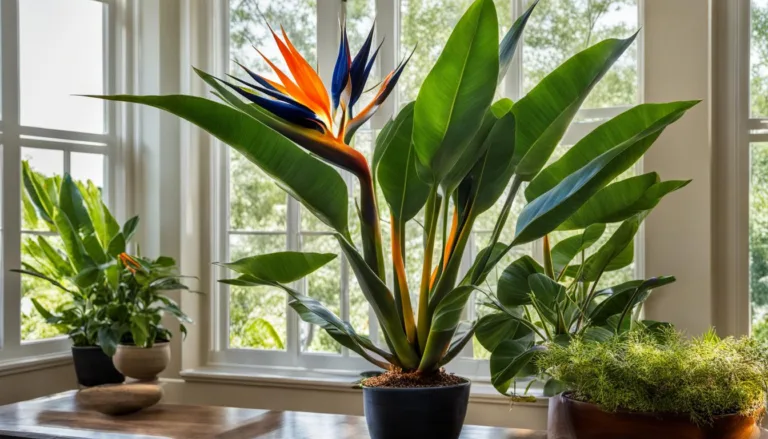
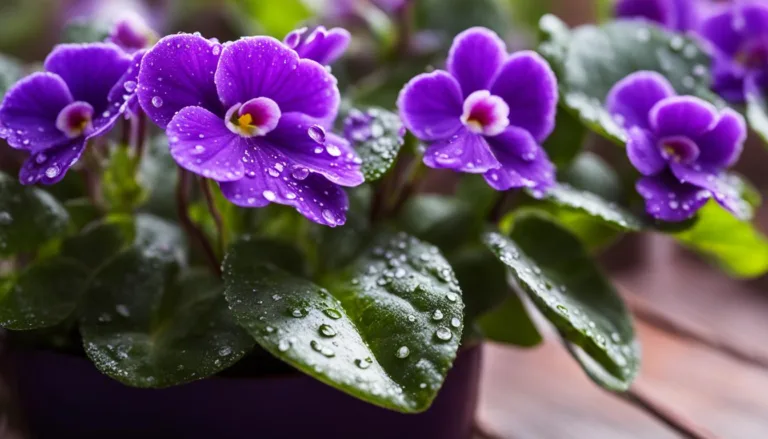
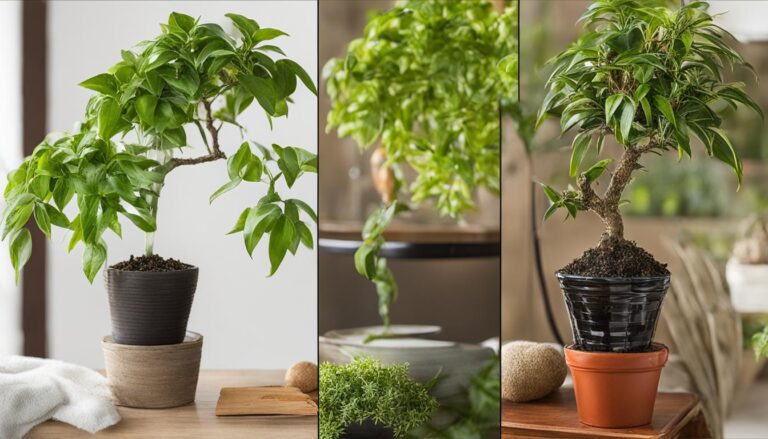
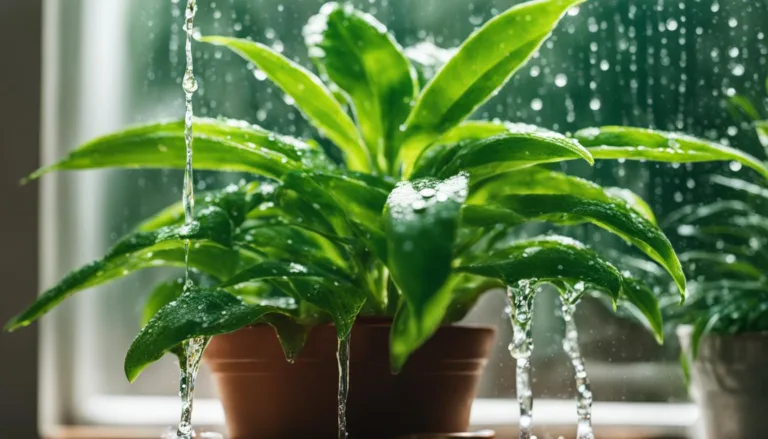
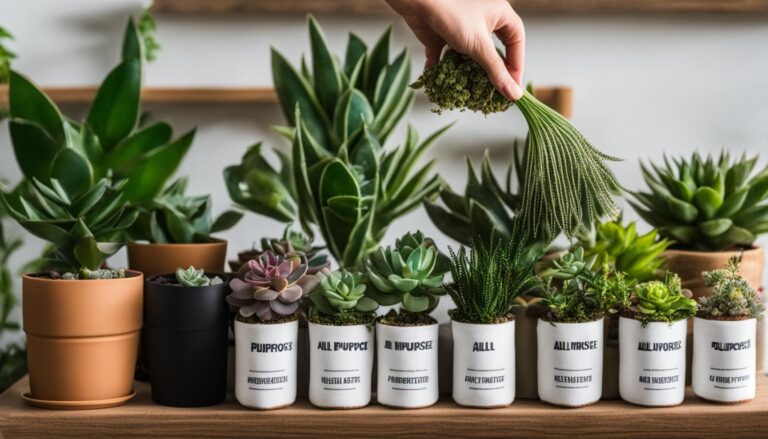
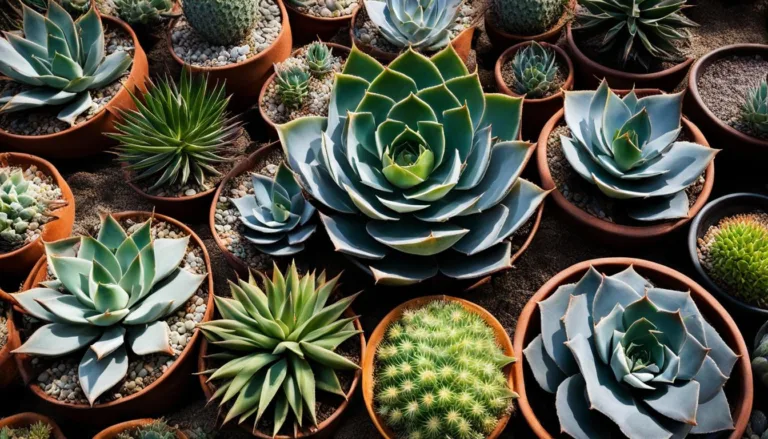
4 Comments
Comments are closed.